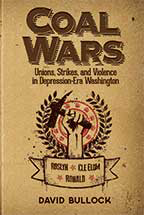To fight the damaging effects of fugitive material on single-direction belts, the Torsion VPlow is engineered with a unique spring-loaded suspension system that allows the plow to rise and fall with fluctuations in belt tension and travel.
Attached with dual steel crossbars bolted to the conveyor frame a few feet from the tail pulley, the unit is secured by two heavy-duty safety cords. Three torsion arms system adjust independently, maintaining consistent pressure for effective cleaning in all stages of blade wear. Effective on standard tail pulleys or wing pulleys at belts speeds up to 900 fpm (46 m/sec), the easily replaceable blade delivers 2 in. (5 cm) of wear and can be specified in 60 Shore A durometer nitrile rubber or heavy-duty 90 Shore A durometer urethane.
For less extreme service environments, Martin Engineering also supplies an economical solution designed for medium- to heavy-duty applications: the Martin VPlow HD, which features a durable 60 Shore A durometer nitrile rubber blade that delivers 2 in. (5 cm) of wear life. Capable of withstanding service temperatures up to 250°F (121°C), the design is suitable for non-reversing belt speeds as high as 900 fpm (4.6 m/sec).
For conveyor systems running at faster speeds or carrying heavy loads, the Martin VPlow XHD protects non-reversing standard tail pulleys even at belt speeds exceeding 1,000 fpm (5.08 m/sec), at service temperatures from -20° to 160°F (-29° to 71°C). The heavy-duty ½-in. (1.27-cm) steel frame construction withstands greater impacts, resulting in durable performance over a long service life, even under the most demanding conditions. The 1.25-in. (3.18-cm) thick urethane side blades deliver 3 in. (7.62 cm) of wear.
Like the VPlow HD, the Martin Durt DozerT Plow is designed to handle standard tail pulleys or wing pulleys on single-direction belts. It sits across the belt at a 45° angle and uses its curved blade to remove fugitive material from the inside surface of belts traveling at speeds up to 700 fpm. The company offers 11 different sizes to accommodate single-direction belts from 18 in. to 96 in. wide.
For tail protection on reversing belts, the Martin Diagonal Plow is a straight blade design, hung from brackets on both sides of the conveyor. The device floats on the surface of the belt to remove spillage, without the need for adjustment. The durable 60 Shore A durometer nitrile rubber blade delivers 1.5 in. of wear at service temperatures up to 250°F (121°C) and belt speeds up to 900 fpm (4.6 m/sec).
NEW BOOK EXPLORES COAL TOWN’S LABOR HISTORY

Sleepy little Roslyn had always been a coal town, ever since a railway company opened its first mine in 1886. On a normal shift, miners spent 10 or more hours at the workplace. In his new book Coal Wars, author David Bullock includes the story of his immigrant grandfather, one of many who dressed, prepared lights and equipment, and traveled in and out of the mine shaft on his own time. Some trips took nearly an hour each way.
In the early 1930s, concerned about safety, locals demonstrated at the state capital. Their success prompted additional dreams of better working conditions, fair wages and a six-hour workday. They expected their national union, the United Mine Workers of America (UMWA), to remain strong during contract negotiations. Instead, UMWA leaders aligned with the coal company, setting the stage for the rise of a new local organization, the Western Miners Union of America.
With the U.S. in the midst of an economic depression, the fledgling group faced opposition from a mighty labor union, a powerful railroad empire, and their own government. They resorted to intimidation to recruit members. The conflict between the two unions intensified, leading to murder on a Roslyn street corner. When the killer was acquitted, community outrage rose, and Communist activists and other radicals offered to back the western miners. They called to strike on April 3, 1934.
Although a common occurrence for central Washington miners, this labor shutdown was different. This time the unions were rivals, dividing families and pitting neighbor against neighbor. The conflicting alliances turned residents of Roslyn, Cle Elem, and Ronald against each other, and the battle that followed left lasting scars.
As he researched the events decades later, Bullock encountered lingering bitter sentiments. His account brought to life through interviews with local residents, newspapers, court documents and corporate archives.
His narrative also describes the region’s melting pot of working families and the socio-political impacts of New Deal policies on their lives.
Coal Wars is available at bookstores nationwide or direct from WSU Press .


